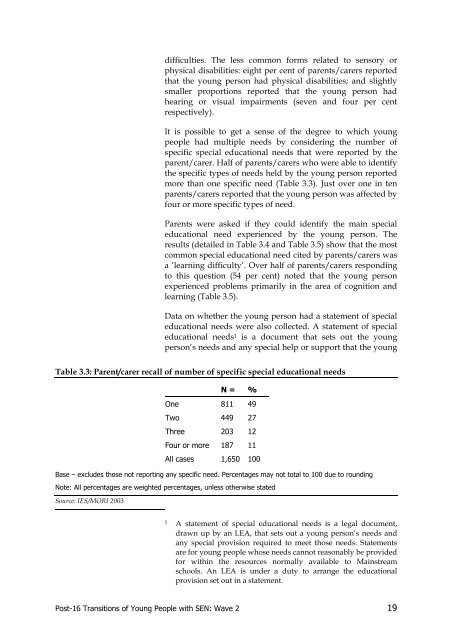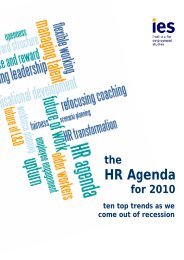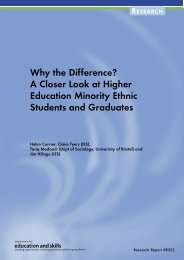Post-16 Transitions: a Longitudinal Study of Young People with ...
Post-16 Transitions: a Longitudinal Study of Young People with ...
Post-16 Transitions: a Longitudinal Study of Young People with ...
You also want an ePaper? Increase the reach of your titles
YUMPU automatically turns print PDFs into web optimized ePapers that Google loves.
difficulties. The less common forms related to sensory or<br />
physical disabilities: eight per cent <strong>of</strong> parents/carers reported<br />
that the young person had physical disabilities; and slightly<br />
smaller proportions reported that the young person had<br />
hearing or visual impairments (seven and four per cent<br />
respectively).<br />
It is possible to get a sense <strong>of</strong> the degree to which young<br />
people had multiple needs by considering the number <strong>of</strong><br />
specific special educational needs that were reported by the<br />
parent/carer. Half <strong>of</strong> parents/carers who were able to identify<br />
the specific types <strong>of</strong> needs held by the young person reported<br />
more than one specific need (Table 3.3). Just over one in ten<br />
parents/carers reported that the young person was affected by<br />
four or more specific types <strong>of</strong> need.<br />
Parents were asked if they could identify the main special<br />
educational need experienced by the young person. The<br />
results (detailed in Table 3.4 and Table 3.5) show that the most<br />
common special educational need cited by parents/carers was<br />
a ‘learning difficulty’. Over half <strong>of</strong> parents/carers responding<br />
to this question (54 per cent) noted that the young person<br />
experienced problems primarily in the area <strong>of</strong> cognition and<br />
learning (Table 3.5).<br />
Data on whether the young person had a statement <strong>of</strong> special<br />
educational needs were also collected. A statement <strong>of</strong> special<br />
educational needs 1 is a document that sets out the young<br />
person’s needs and any special help or support that the young<br />
Table 3.3: Parent/carer recall <strong>of</strong> number <strong>of</strong> specific special educational needs<br />
N = %<br />
One 811 49<br />
Two 449 27<br />
Three 203 12<br />
Four or more 187 11<br />
All cases 1,650 100<br />
Base – excludes those not reporting any specific need. Percentages may not total to 100 due to rounding<br />
Note: All percentages are weighted percentages, unless otherwise stated<br />
Source: IES/MORI 2003<br />
1 A statement <strong>of</strong> special educational needs is a legal document,<br />
drawn up by an LEA, that sets out a young person’s needs and<br />
any special provision required to meet those needs. Statements<br />
are for young people whose needs cannot reasonably be provided<br />
for <strong>with</strong>in the resources normally available to Mainstream<br />
schools. An LEA is under a duty to arrange the educational<br />
provision set out in a statement.<br />
<strong>Post</strong>-<strong>16</strong> <strong>Transitions</strong> <strong>of</strong> <strong>Young</strong> <strong>People</strong> <strong>with</strong> SEN: Wave 2 19

















